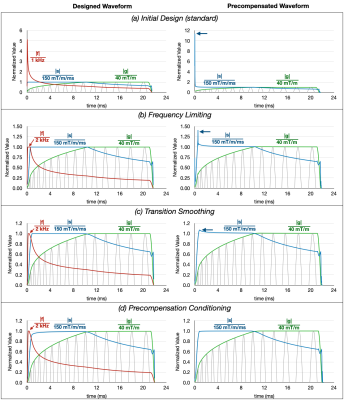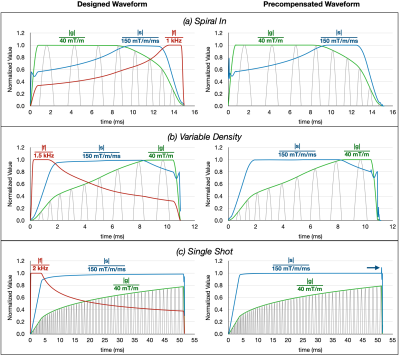James Pipe1
1Mayo Clinic, Rochester, MN, United States
1Mayo Clinic, Rochester, MN, United States
Gradients for arbitrary spiral trajectories are optimized to have lower frequency content, so that the designed trajectory better matches a given gradient transfer function. Precompensation conditioning results in precompensated waveforms which optimally match gradient limits.

Designed (left) and precompensated (right) waveforms for the Standard trajectory, from (a) the initial design, then adding (b) frequency limiting, (c) transition smoothing, and (d) precompensation conditioning. Frequency, slew, and gradient amplitude waveforms are colored red, blue, and green, while the gray waveforms show the positive part of Gx. The blue arrows illustrate the spikes in the slew rate of the precompensated waveforms, which are further mitigated with each layer. Waveforms are normalized by the design maximum for easier visualization.

Designed (left) and precompensated (right) waveforms for the (a) spiral-in, (b) variable density, and (c) single shot trajectories. Frequency, slew, and gradient amplitude waveforms are colored red, blue, and green, while the gray waveforms show the positive part of Gx. Waveforms are normalized by the design maximum for easier visualization.
